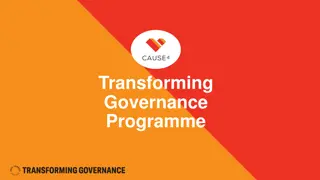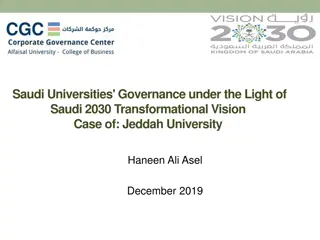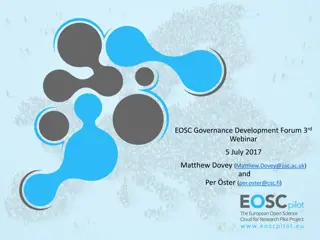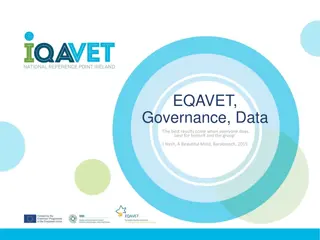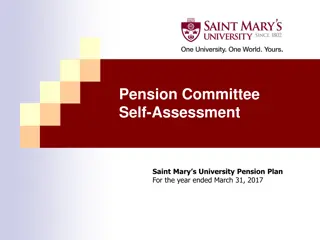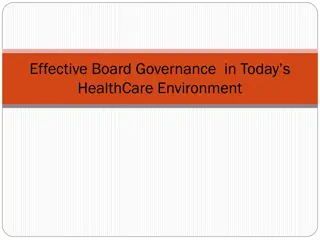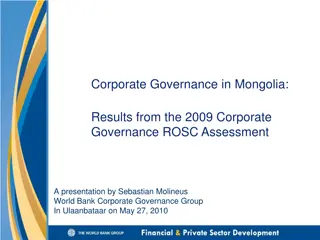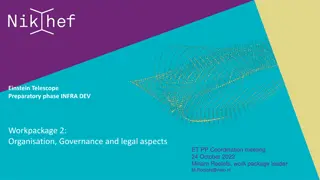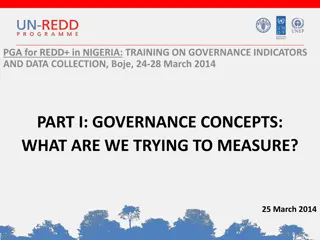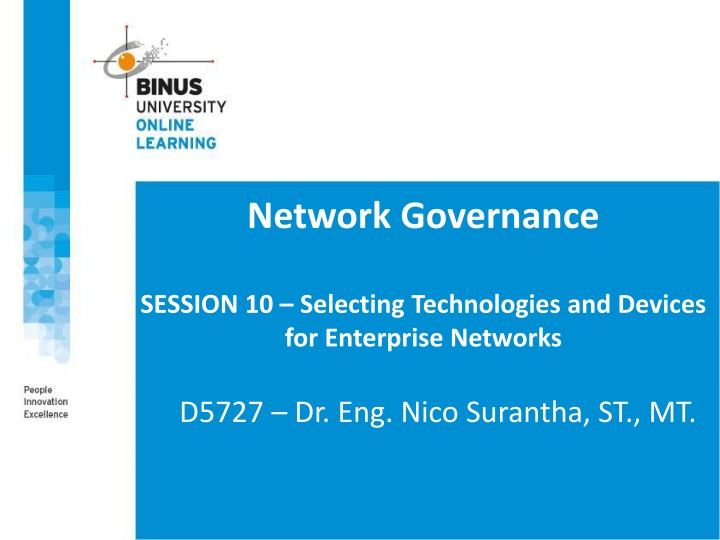
Selecting Technologies and Devices: Enterprise Network Best Practices
Explore the best practices for selecting technologies and devices for enterprise networks, focusing on remote access devices, WAN technologies, selection criteria, and remote access technologies like PPP and ISDN.
Download Presentation

Please find below an Image/Link to download the presentation.
The content on the website is provided AS IS for your information and personal use only. It may not be sold, licensed, or shared on other websites without obtaining consent from the author. If you encounter any issues during the download, it is possible that the publisher has removed the file from their server.
You are allowed to download the files provided on this website for personal or commercial use, subject to the condition that they are used lawfully. All files are the property of their respective owners.
The content on the website is provided AS IS for your information and personal use only. It may not be sold, licensed, or shared on other websites without obtaining consent from the author.
E N D
Presentation Transcript
Network Governance SESSION 10 Selecting Technologies and Devices for Enterprise Networks D5727 Dr. Eng. Nico Surantha, ST., MT.
OUTLINE 1. SELECTING REMOTE-ACCESS DEVICES FOR AN ENTERPRISE WAN TECHNOLOGIES 2.
Selecting Technologies and Devices We now know what the network will look like We also know what capabilities the network will need We are now ready to start picking out technologies and devices Chapter 10 of the text book has guidelines for campus networks and Chapter 11 for enterprise network Bina Nusantara University
Enterprise Technologies and Devices Remote access networks Wide area networks (WANs) Devices End user remote access devices Central site remote access devices VPN concentrators Routers Bina Nusantara University
Selection Criteria Business requirements and constraints Cost Technical goals Bandwidth requirements QoS requirements Network topology Traffic flow and load Etc. Bina Nusantara University
Remote Access Technologies The Point-to-Point Protocol (PPP) Integrated Services Digital Network (ISDN) Cable modems Digital Subscriber Line (DSL) Bina Nusantara University
Point-to-Point Protocol (PPP) Used with synchronous, asynchronous, dial- up, and ISDN links Defines encapsulation scheme for transport of different network-layer protocols Supports authentication: Password Authentication Protocol (PAP) Challenge Handshake Authentication Protocol (CHAP) CHAP more secure than PAP Bina Nusantara University
PPP Layers Network Control Protocol (NCP) Link Control Protocol (LCP) Encapsulation based on High-Level Data-Link Control Protocol (HDLC) Physical Layer Bina Nusantara University
Multichassis Multilink PPP Stack group ISDN Offload server Analog Bina Nusantara University
CHAP Remote Node Access Server Connect Database of Users and Passwords Challenge Name: 760_1 Password: sfy45 Name: 760_1 Password: sfy45 Hashed Response Name: 760_2 Password: kingsford Accept or Deny Bina Nusantara University
ISDN Digital data-transport service offered by regional telephone carriers (telcos) Circuit-switched service that carries voice and data Cost-effective remote-access solution for telecommuters and remote offices Cost of an ISDN circuit is usually based on a monthly fee plus usage time Good choice as a backup link for another type of link, for example, Frame Relay Bina Nusantara University
ISDN Interfaces Basic Rate Interface (BRI) } 64 Kbps 64 Kbps 2B 144 Kbps D 16 Kbps Primary Rate Interface (PRI) 1.544 Mbps in U.S. 64 Kbps 64 Kbps} 23B or 30B 2.048 Mbps in Europe D Bina Nusantara University
ISDN Components Non- ISDN device (TE2) R S/T U To ISDN service NT1 TA 4-wire circuit 2-wire circuit S/T U ISDN device (TE1) To ISDN service NT1 S T U ISDN device (TE1) To ISDN service NT1 NT2 U ISDN device (TE1) with built-in NT1 To ISDN service NT1 Bina Nusantara University
Cable Modem Service Operates over the coax cable used by cable TV Much faster than analog modems, and usually much faster than ISDN (depending on how many users share the cable) 25 to 50 Mbps downstream from the head end 2 to 3 Mbps upstream from end users Standard = Data Over Cable Service Interface Specification (DOCSIS) Bina Nusantara University
DSL High-speed digital data traffic over ordinary telephone wires Sophisticated modulation schemes mean higher speeds than ISDN Speeds range from 1.544 to 9 Mbps Actual bandwidth depends on type of DSL service, DSL modem, and many physical-layer factors Asymmetric DSL (ADSL) very popular Downstream faster than upstream Bina Nusantara University
WAN Technologies Leased lines Synchronous Optical Network (SONET) Frame Relay Asynchronous Transfer Mode (ATM) Bina Nusantara University
Leased Lines Dedicated digital, copper circuits that a customer leases from a carrier for a predetermined amount of time, usually for months or years Speeds range from 64 Kbps to 45 Mbps Enterprises use leased lines for both voice and data traffic Bina Nusantara University
The North American Digital Hierarchy Signal Capacity Number of DS0s Colloquial Name DS0 DS1 DS1C DS2 DS3 DS4 64 Kbps 1.544 Mbps 3.152 Mbps 6.312 Mbps 44.736 Mbps 274.176 Mbps 1 24 48 96 672 4032 Channel T-1 T-1C T-2 T-3 T-4 Bina Nusantara University
Synchronous Optical Network (SONET) Physical-layer specification for high-speed synchronous transmission of packets or cells over fiber-optic cabling Service providers and carriers make wide use of SONET in their internal networks Gaining popularity within private networks Bina Nusantara University
SONET Optical Carrier (OC) Levels aka Synchronous Transport Signal (STS) Levels STS Rate OC Level Speed STS-1 STS-3 STS-12 STS-24 STS-48 STS-96 STS-192 OC-1 OC-3 OC-12 OC-24 OC-48 OC-96 OC-192 51.84 Mbps 155.52 Mbps 622.08 Mbps 1.244 Gbps 2.488 Gbps 4.976 Gbps 9.952 Gbps Bina Nusantara University
Typical SONET Topology SONET Multiplexer Backup Pair Working Pair Bina Nusantara University
Frame Relay Industry-standard data-link-layer protocol for transporting traffic across wide-area virtual circuits Optimized for efficiency on circuits with low error rates Attractively-priced in most parts of the world Carriers agree to forward traffic at a Committed Information Rate (CIR) Bina Nusantara University
Frame Relay (continued) To Router B: DLCI 100 To Router A: DLCI 200 Router A Router B Virtual Circuit (VC) Bina Nusantara University
Frame Relay Hub-and- Spoke Uses Subinterfaces hostname centralsite interface serial 0 Central-Site Router encapsulation frame-relay interface serial 0.1 ip address 10.0.1.1 255.255.255.0 DLCI 100 DLCI 200 frame-relay interface-dlci 100 interface serial 0.2 ip address 10.0.2.1 255.255.255.0 frame-relay interface-dlci 200 Bina Nusantara University
Asynchronous Transfer Mode (ATM) Used in service provider internal networks Gaining popularity within private networks, both WANs and sometimes LANs Supports very high bandwidth requirements Copper cabling: 45 Mbps or more Fiber-optic cabling: OC-192 (9.952 Gbps) and beyond, especially if technologies such as wave-division multiplexing (WDM) are used Bina Nusantara University
ATM (continued) Provides efficient sharing of bandwidth among applications with various Quality of Service (QoS) requirements Cell-based system inherently better for QoS than frames Application can specify upon connection establishment the QoS it requires Peak and minimum cell rates, cell-loss ratio, and cell-transfer delay Bina Nusantara University
Ethernet over ATM ATM router interfaces are expensive Some providers allow a customer to use an Ethernet interface to access the provider s ATM WAN May require a converter Expected to gain popularity because it has the advantages of both worlds Easy-to-use LAN QoS-aware WAN Bina Nusantara University
Selection Criteria for Remote Access Devices Support for VPN features Support for NAT Reliability Cost Ease of configuration and management Support for one or more high-speed Ethernet interfaces If desired, wireless support Etc. Bina Nusantara University
Selection Criteria for VPN Concentrators Support for: Tunneling protocols such as IPSec, PPTP, and L2TP Encryption algorithms such as 168-bit Triple DES, Microsoft Encryption (MPPE), RC4, AES Authentication algorithms, including MD5, SHA-1, HMAC Network system protocols, such as DNS, RADIUS, Kerberos, LDAP Routing protocols Certificate authorities Network management using SSH or HTTP with SSL Etc. Bina Nusantara University
Selection Criteria for Enterprise Routers Number of ports Processing speed Media and technologies supported MTTR and MTBF Throughput Optimization features Etc Bina Nusantara University
Selection Criteria for a WAN Service Provider Extent of services and technologies Geographical areas covered Reliability and performance characteristics of the provider s internal network The level of security offered by the provider The level of technical support offered by the provider The likelihood that the provider will continue to stay in business Bina Nusantara University
Selecting a Provider (continued) The provider s willingness to work with you to meet your needs The physical routing of network links Redundancy within the network The extent to which the provider relies on other providers for redundancy The level of oversubscription on the network QoS support Etc. Bina Nusantara University
Conclusion A major task during the physical design phase is selecting technologies and devices for enterprise networks Remote access networks WANs Service providers Devices End user remote access devices Central site remote access devices VPN concentrators Routers Bina Nusantara University
DAFTAR PUSTAKA/SUMBER Oppenheimer, Priscilla. (2013). Top Down Network Design. 3rd Edition. Cisco Press. Indianapolis. ISBN: 978-1-58705- 152-4. Hummel, S. L. (2015). Cisco Design Fundamentals: Multilayered Network Architecture and Design for Network Engineers. Bruno, A., & Jordan, S. (2016). CCDA 200-310 Official Cert Guide. Cisco Press.
Thank You Thank You

